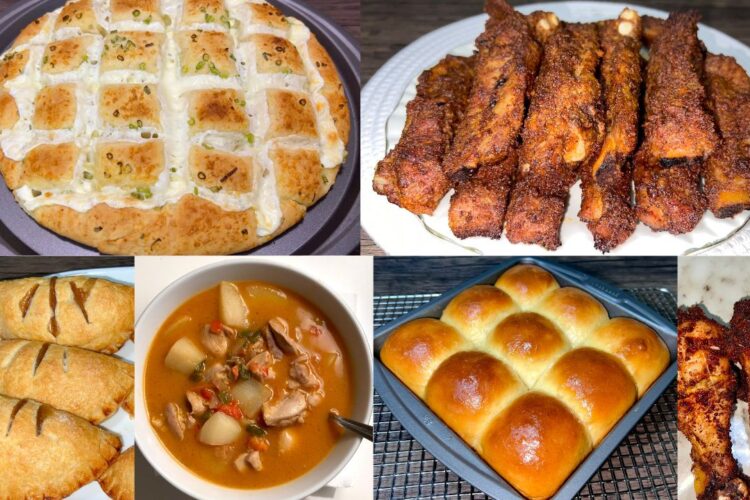This post may contain affiliate links, which means I may receive a commission from purchases made through the links.
When we think of American cuisine, many of us picture hamburgers, hot dogs, pizza, or perhaps a slice of apple pie. While these are undeniably iconic, they barely scratch the surface of the richness of cuisine that the United States has to offer. From the spicy, bold flavors of the Southwest to the hearty, comforting dishes of the Midwest, regional American cuisine reflects the country’s cultural diversity and rich history. In this article, we crisscross the nation and explore some of its most celebrated regional foods.
The Northeast: A Fusion of Tradition and Comfort
Let’s start with the Northeast. Often referred to as the cradle of American cuisine, the Northeast is known for its historic recipes and seafood-centric dishes. New England, in particular, offers iconic dishes like clam chowder – a creamy, hearty soup that warms your soul. Lobster rolls, often enjoyed during summer, highlight the region’s access to fresh Atlantic seafood.
In Pennsylvania, you’ll find the famous Philly cheesesteak, a mouthwatering sandwich piled high with thinly sliced beef, melted cheese, and onions served on a hoagie roll. Yum!
New York, on the other hand, is popular for its New York-style pizza and bagels but that’s not all. A dish like Utica greens, an Italian-American dish, features sautéed escarole with hot peppers, prosciutto, and breadcrumbs. This dish, apparently, originated in Utica, hence the name.
Another popular dish of the Northeast is Boston baked beans. A classic from Massachusetts, these beans are slow-cooked with molasses and salt pork, offering a sweet and savory flavor.
Across the region, traditional recipes passed down through generations are celebrated, such as Boston baked beans and New York-style pizza.
The South: Home of Soul Food
Southern cuisine is rich with comforting dishes that tell stories of tradition and community. It is a testament to the region’s agricultural roots and African-American culinary heritage. Fried chicken, cornbread, and collard greens are staples, each dish brimming with history and flavor. Also, barbecue is king in this region with states like Texas, Tennessee, and the Carolinas boasting their own distinctive styles, from tangy vinegar-based sauces to smoky, sweet rubs. In other words, you cannot talk barbecue in the United States without thinking about the South.
The list does not end there. In Louisiana, gumbo and jambalaya are Creole and Cajun classics that cannot be missed in the list of regional American cuisine. These recipes combine French, Spanish, and African influences to create dishes bursting with flavor. The recipes often call for bold spices and fresh seafood. The South’s desserts deserve a shoutout too! Pecan pie and banana pudding, to mention a few, offer the perfect sweet endings to all that soulful food. Tell me you do not wanna visit the South right now.
The Midwest: Hearty and Heartwarming Dishes
The Midwest is often called the breadbasket of America, and its cuisine reflects the abundance of its farmland. The dishes here are as flavorful as they are filling. Think casseroles, pot roasts, and the like.
Deep-dish pizza in Chicago is a must-try, with its thick crust and generous layers of cheese and toppings. Wisconsin’s cheese culture shines through in dishes like cheese curds and beer cheese soup. In the Dakotas, you might encounter bison burgers, a nod to the region’s frontier history.
Meanwhile, Minnesota’s wild rice soup showcases the state’s unique agricultural product. Another staple of Minnesota is the popular hotdish – a casserole that combines meat, vegetables, and a starch, often topped with tater tots. Finally, the Cincinnati Chili is a unique take on chili from Ohio. It is spiced with cinnamon and served over spaghetti, often topped with cheese, onions, and beans.
The Southwest: Home of Bold and Spicy
The Southwest is a melting pot of Native American, Mexican, and Spanish influences, creating a cuisine that’s rich in flavor and tradition. New Mexico’s green chile stew is legendary, while Texas’ Tex-Mex dishes, like enchiladas and fajitas, have gained nationwide popularity.
Indigenous ingredients like corn, beans, and squash remain central to the region’s cuisine. Next time you visit this region, try Navajo fry bread, a deep-fried dough often served with honey or used as the base for savory Navajo tacos that are piled high with ground beef, beans, lettuce, cheese, and salsa.
Finally for this region is the Sonoran hot dogs. A Tucson favorite, these bacon-wrapped hot dogs are topped with pinto beans, onions, tomatoes, and a variety of condiments. How does that sound?
The West Coast: Fresh and Innovative
The West Coast’s cuisine is ever-evolving, embracing both tradition and innovation. Known for its farm-to-table ethos, the West Coast offers a cuisine that emphasizes fresh, local ingredients. California is synonymous with avocado toast and vibrant salads, but it’s also the birthplace of fusion cuisine. Think Korean tacos and sushi burritos, which reflect the region’s diverse cultural influences.
Up north, the Pacific Northwest shines with its seafood offerings. Salmon, Dungeness crab, and oysters are stars of the show, often paired with locally sourced produce. For example, cioppino is a San Francisco seafood stew with Italian roots, featuring a medley of seafood simmered in a tomato and wine broth. There’s also a Marionberry pie which is an Oregon specialty that showcases the state’s beloved marionberries, offering a sweet-tart flavor encased in a flaky crust.
The region’s love for coffee and craft beer adds a distinct flavor to its culinary identity in regional American cuisine.
Conclusion
Regional American cuisine is as diverse as the country itself, each dish telling a story of its origins and the people who created it. If you ask me, it is such an advantage to live in such a huge country with endless culinary diversity. You could be savoring a bowl of gumbo in Louisiana today and be biting into a lobster roll in Maine or indulging in a slice of deep-dish pizza in Chicago the next day. All in all, you’re experiencing a piece of American history and culture. So, the next time you plan a trip across the U.S., let your taste buds lead the way. After all, there’s no better way to explore the nation than through its food.
To read more articles on my blog, please visit https://divdishes.com/






